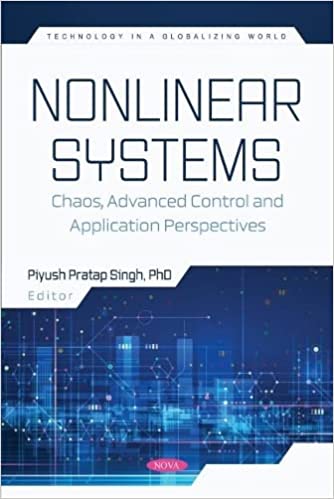
English | 2022 | ISBN: 1685076602, 978-1685076603 | 150 pages | True PDF | 47.55 MB
The book covers different subjects in the field of nonlinear dynamics, especially applications and investigation of chaos and chaotic systems in electrical engineering, information technology, communication engineering and mechanical engineering. This book is suitable as a textbook at the graduate or advanced undergraduate level and will appeal to postgraduate-level students and young researchers in different fields. This book provides technological advancement in nonlinear dynamics and chaos and explores the fields of communication, electric vehicles, power systems and rotational machines with centrifugal flyball governor system. An autonomous chaotic system is explored with real and complex state variables; their projective synchronisation is reported with application to secure communication. Secure communication is achieved using Masking-Modulation and Diffie-Hellman Key Exchange encryption techniques. Further, electric vehicles are the necessity of upcoming trends. To optimize the control performance of the permanent-magnet synchronous motor with different disturbances and uncertainties, a nonlinear control for the permanent-magnet synchronous motor using sliding-mode control is reported and Cascaded PI sliding mode control technique is explored to control the chaotic behaviour in electric vehicles. Chaos behaviour is explored in power systems and its control is presented using higher order sliding mode control. Comparative performances are analysed followed by control of chaos in the Rotational Machine with Centrifugal Flyball Governor system where chaos is controlled using recursive backstepping sliding mode control. All the simulations are carried out in the MATLAB environment and reveal successful achievement of the objectives. Researchers from academia and industry, who are working in the research areas Nonlinear Dynamical Systems & Chaos, Electrical Engineering, Computer Science Engineering, Information Technology, Communication Engineering and Mechanical Engineering may be principal audiences. Also, the book will be helpful for (i) graduate or advanced undergraduate level students as a textbook or major reference book for courses such as electrical circuits, nonlinear dynamical systems, mathematical modelling, computational science, numerical simulation, and many others and (ii) postgraduate level students and young researchers in the following fields: Communication Engineering; Computer Science; Electrical and Electronic Engineering; Mechanical Engineering; Engineering Mathematics; Computational Physics.



